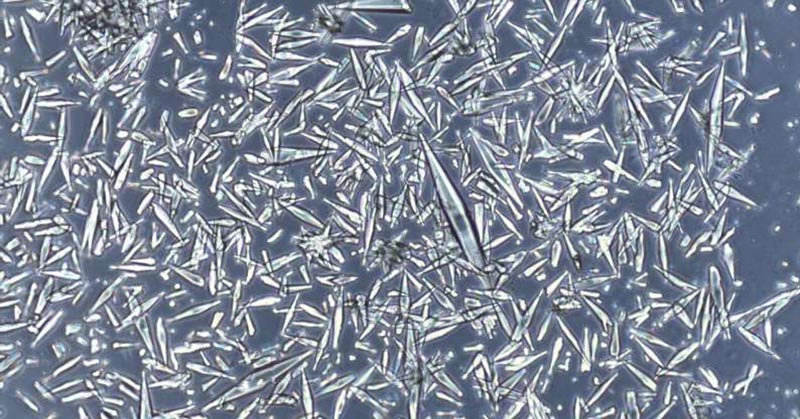A team of European research groups recently claimed they uncovered a contributing cause of asthma symptoms, and even better, that they may have just designed the cure.
Scientists from Ghent University in Belgium partnered with others from Ghent University Hospital, a biotech company called arGEN-X, and associates from Stockholm, Marseilles, and Rotterdam looked to gout as a hint for helping to treat asthma.
The pain and inflammation experienced with gout are associated with uric acid crystallization. Similarly, asthma has long been known to be associated with the presence of Charcot-Leyden crystals (CLCs) – since 1853, in fact. Until recently, scientists didn’t know whether CLCs were just a marker useful for diagnosis or one of the causes of asthmatic symptoms.
Professor Bart Lambrecht wrote of the team’s thought process, “By analogy with gout, where uric acid crystals cause a very painful attack of joint inflammation, we reasoned that Charcot-Leyden crystals might also cause harm in the lungs of asthma patients.” (1)
Understanding Asthma & Inflammation
Asthma is a chronic disease in which various triggers like allergens or difficult exercise can cause your airways to become inflamed and filled with mucus. (2)
Conventionally, doctors prescribe two types of medications to help control asthma and prevent attacks.
- Asthma Preventer/Controller Medicine (such as Flovent, Pulmicort, or Asmanex) – These medications are taken regularly to help prevent inflammation and mucus before an attack occurs.
- Asthma Rescue/Reliever Medicine (such as Ventolin, Airomir, or Bricanyl) – These medications are taken only during an asthma attack. They work to quickly relax the airway muscles and counteract swelling and restriction in the airways. (3)
While an asthma controller can help prevent inflammation and mucus, and an asthma rescuer can help relieve inflammation, we don’t readily have a treatment that can help relieve mucus accumulation once an asthma attack has already started. This is exactly where the work of the Belgian team is relevant.
New Research Reverses Asthma Symptoms by Targetting Crystals
Led by Emma K. Persson of the VIB Center for Inflammation Research and Ghent University, the team first set out to create man-made crystals that behaved identically to Charcot-Leyden crystals. Using samples from real people, they did exactly that, naming their crystal look-alikes galectin-10 (Gal10). (1)
They realized that Gal10, which produced asthma symptoms including inflammation, mucus build-up, and tight airways, only did so when in a crystalline state and not in a solution state. (1)
Next, the team partnered with biotech company arGEN-X to develop an antibody that could dissolve these crystals and render them harmless. (1)
An initial round of petri dish tests was able to dissolve the crystals within mere minutes! Consequent rounds of testing involving patient mucus and in mice showed promising results within hours. (1)
Professor Savvas N. Savvides of VIB Center for Inflammation Research and Ghent University wrote, “It was like a ‘now you see it, now you don’t’ display of molecular magic. I have spent 25 years learning and agonizing about how to grow protein crystals for structural biology, and all of a sudden, I was seeing protein crystals dissolve in real time. And to top it off, we also got to visualize how these antibodies actually do their magic by determining their crystal structure in complex with their antigen.”
Professor Bart Lambrecht of the Department of Pulmonary Medicine summarized his surprise and optimism for the work his team was able to accomplish together, saying:
“Our research results were unexpected and crystal-clear at the same time. I was completely struck by the fact that antibodies can rapidly dissolve CLCs that are so abundantly present in the native mucus of patients. Although more tests are needed, the data in mouse models suggest that use of these antibodies could be a very effective way of reducing excessive inflammation and mucus accumulation in the lungs of patients with asthma. Since there are no drugs currently targeting mucus accumulation in the airways, this could be a game changer for treating this disease.” (4)

